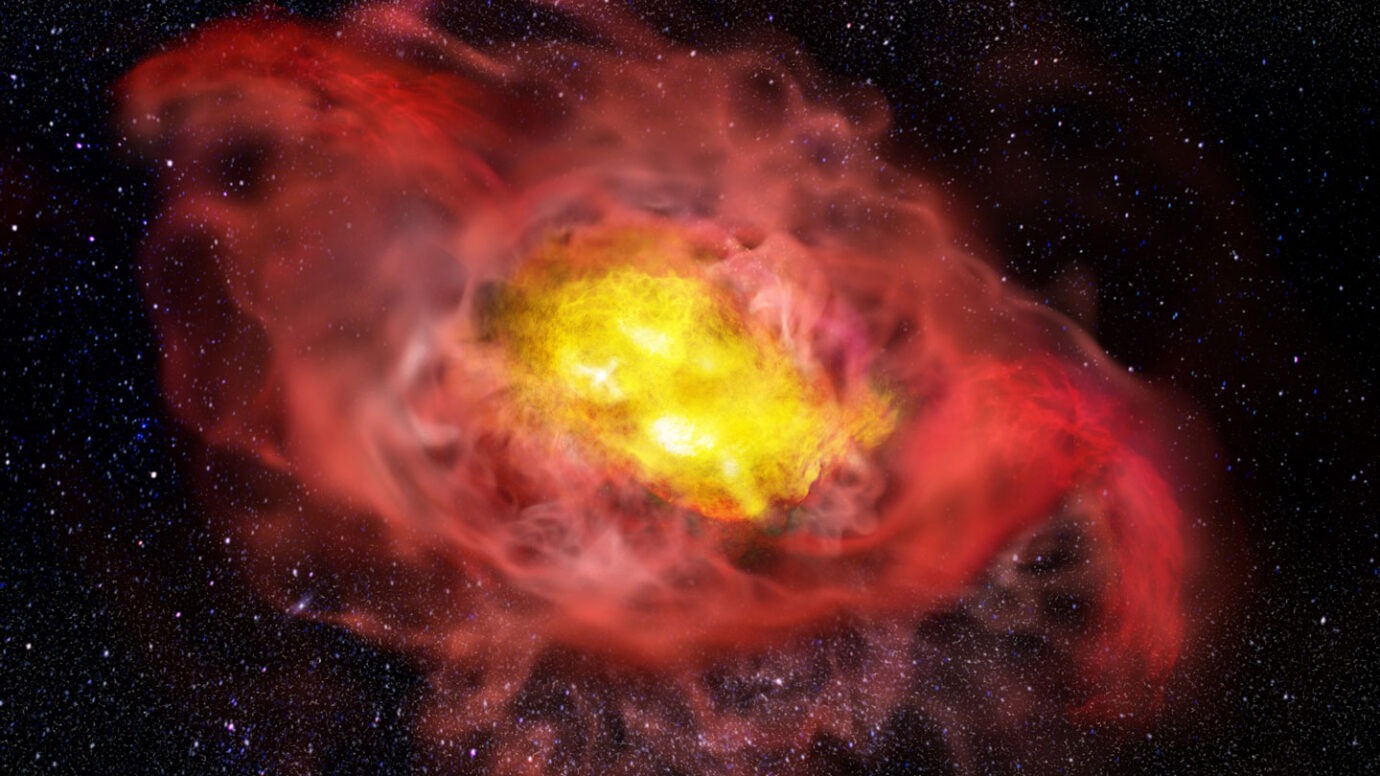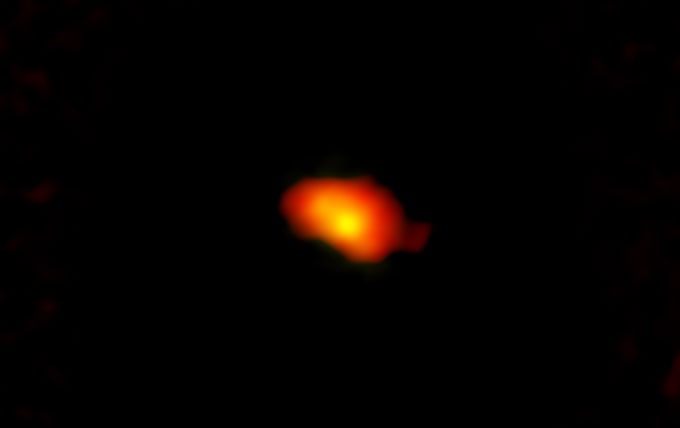Astronomers have witnessed the process of the young galaxy A1689-zD1 in the early Universe, which saturates the environment with elements necessary for the creation of subsequent generations of stars and galaxies. This process took place 700 million years after the Big Bang, which is equal to a distance with a redshift of 7.13.

“This is the oldest known galaxy. Subsequently, it could even turn into something like the Milky Way,” commented astronomer Hollis Akins during a press conference at a meeting of the American Astronomical Society.
Galaxy A1689-zD1 was able to be seen thanks to the increased light of gravitational lensing that passed through a large cluster of galaxies Abell 1689. Compared to other observable galaxies in the early Universe, A1689-zD1 has very few stars. This means that the galaxy is very dim for ground-based telescopes. But the intermediate cluster increased the light of A1689-zD1 by almost 10 times.
Unexpected discovery
Akins and his colleagues studied lensed light using ALMA, a large network of radio telescopes in Chile. The team studied the intensity of a certain oxygen spectral line, an indicator for hot ionized gas, and a carbon spectral line, an indicator for cold neutral gas. Hot gas appears where bright stars are located, but cold gas spreads four times further, which the team did not expect.

“There must be some mysterious mechanism for carbon ‘ejecting’ into the near-galactic environment,” Akins explains.
Mystery Explanation
Only a few scenarios can explain the ejection of matter from the galaxy. Perhaps the small galaxies merge with A1689-zD1 and push the gas away from the center, where it cools. Or perhaps the intense heat from star formation is pushing out the gas. The latter would be a surprise, given the relatively low rate of star formation in this galaxy. In any case, this gas rich in heavy elements enriches the near-galactic environment, which will eventually be incorporated into subsequent generations of stars.
Astronomers still haven’t finished studying A1689-zD1. Observations of A1689-zD1 show that this gas flow occurs not only in extremely ultra-bright galaxies, but even in normal galaxies in the early Universe.
“Knowing how this cycle works helps us understand how stars form in early galaxies and how they grow,” says Andreas Feisst, an astrophysicist at the California Institute of Technology.
Previously, scientists assumed that collisions could deprive galaxies of dark matter.
According to Arxiv
Follow us on Twitter to get the most interesting space news in time
https://twitter.com/ust_magazine
